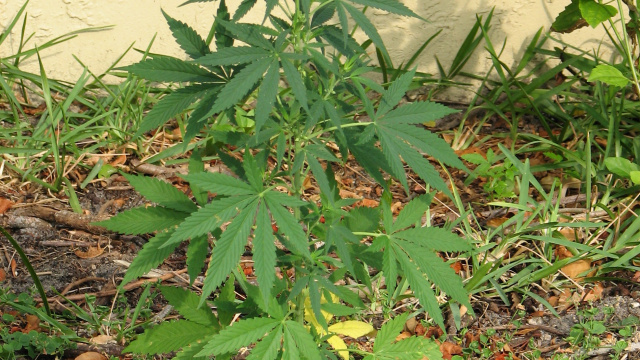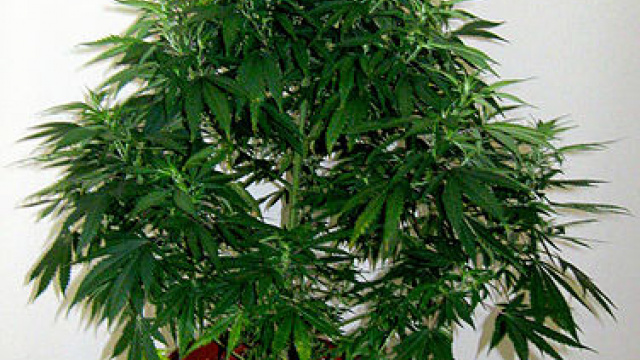 For nearly a century, the United States has been one of the fiercest advocates and practitioners of marijuana prohibition in the world. At the height of the America’s anti-pot fervor in the 1950s and ’60s, one could even receive life imprisonment for simple possession of the drug.
For nearly a century, the United States has been one of the fiercest advocates and practitioners of marijuana prohibition in the world. At the height of the America’s anti-pot fervor in the 1950s and ’60s, one could even receive life imprisonment for simple possession of the drug.
But the puritanical fervor that once dominated the national discussion surrounding cannabis has been conspicuously absent of late. Earlier this month, the Colorado State legislature, by order of a November referendum, passed bills to implement the legalization and regulation of recreational marijuana use. Washington State voters also approved legalization by referendum on election day. And these events have recently been followed by more good news for supporters of cannabis law reform.
The Organization for American States recently suggested that marijuana legalization could be a way to cut down on drug-violence in the western hemisphere. Perhaps most important, the movement has finally found a voice on Capitol Hill, as representatives Earl Blumenauer and Jared Polis submitted legislation earlier this year that would end federal prohibition of the drug, and allow states to tax and regulate it as they see fit. As Bill Keller put it recently in the New York Times, “Today the most interesting and important question is no longer whether marijuana will be legalized — eventually, bit by bit, it will be — but how.”
Indeed, the feeling that the further liberalization of marijuana laws is inevitable is backed up by the polling trends. According to Gallup, as recently as 2005, two-thirds of Americans opposed legalization of marijuana. Now 48% percent of the population supports it. And a similar poll from Pew puts the number even higher – at 52%. But what exactly explains this sudden change in American attitudes towards pot?
Undoubtedly, part of the reason for the increased acceptance is demographic. It might make you feel old to read this, but on Friday, both Bob Dylan and Tommy Chong celebrated birthdays, turning 72 and 74 respectively. The aging of these counterculture icons hasn’t directly changed American attitudes towards marijuana, of course, but it does underscore the fact that the vast majority of Americans living today came of age during a time when marijuana was widely in use. The data bear out the prevalence of marijuana use in today’s society, with 48% of Americans claiming they have tried the drug at least once.
But familiarity with marijuana isn’t by itself going to drive changes in the legal code. Political consensus is necessary too. And while national political leaders aren’t necessarily falling over themselves to endorse marijuana legalization, there isn’t a lot of room in the current political climate to defend it, either. The political right has done an excellent job over the past thirty years convincing the American public of the limitations of government. They have argued that even when the government has the best of intentions it can be astoundingly ineffective at achieving its stated goals, and often creates unintended and pernicious consequences to boot. This is the same argument that has led to deregulation of industry, historically low tax rates, and legislative efforts like welfare reform. It’s only logical to extend it beyond social welfare programs to something like drug policy.
And supporters of ending marijuana prohibition do indeed point to the unintended consequences of the policy as reason to legalize. According to the FBI, in 2011, 1.5 million people were arrested on drug charges, and roughly half of those were for marijuana, costing billions per year in law enforcement and court costs. And that doesn’t count the human toll on those arrested, like potential loss of work, government benefits, the right to vote, and student aid. Meanwhile, the government simply hasn’t come anywhere close to achieving the stated goal of marijuana prohibition, which is to prevent drug addiction. According to the National Survey on Drug Use and Health, since the beginning of the so-called war on drugs, the addiction rate in America has remained steady at 1.3%, despite the fact that each year state and local governments spend more and more money – over $1 trillion in total – fighting the drug war.
What’s more, the unintended consequences of marijuana prohibition do not stop at our borders. In fact, the brunt of the side effects may be being felt in places like Mexico. And as my college Tim Padgett wrote this week, it would appear that America’s allies in the Western hemisphere are looking seriously at ending marijuana prohibition as a strategy for reducing the drug violence that is ravaging much of Latin America. A study issued this month by the Organization of American States declared that it’s now time to seriously consider legalizing pot in order to cut down on this violence. It’s estimated, for instance, that legalizing marijuana in America could eliminate one-third of Mexican cartel’s $30 billion annual haul.
We are in a political moment where social conservatism has been somewhat sidelined as a political force by the growing influence of libertarianism in the Republican party. This dynamic emphasizes the tension between liberty and morality that has been with us since the founding of our country, and at this moment liberty appears to be ascendant. But make no mistake, the puritanical impulses that once made America the leading voice in marijuana prohibition haven’t gone anywhere — and advocates of reform should know that pendulums, once set it motion, swing back again.
Source: Time Magazine (US)
Author: Christopher Matthews
Published: May 28, 2013
Copyright: 2013 Time Inc.
Contact: [email protected]
Website: http://www.time.com/time/



Leave a Reply